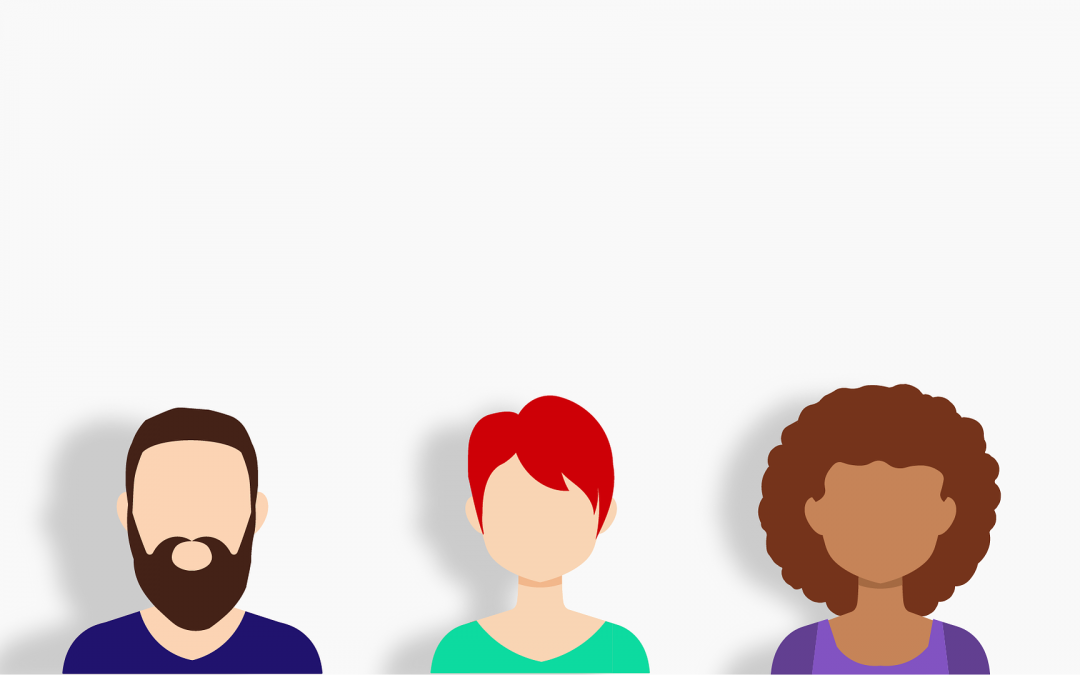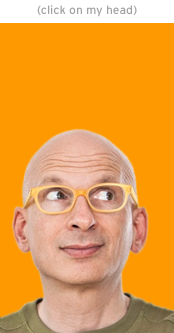
by Scott Howard | Feb 28, 2018 | Marketing and Advertising Insights, Really? The Personal ScLoHo, ScLoHo Sales Tips, ScLoHo's Fort Wayne, The Not-So-Secret Writings of ScLoHo, Uncategorized
I bought a car this month and thought I’d share some lessons for you and your business in this essay I’m calling Selling a Salesperson.
While I am keenly aware of the process because of my profession, the general public is more aware of the tactics too than ever before. Here’s the list of 9 observations I wrote right after buying my car:
- Customers may be smarter or better informed than you.
- Over reliance on certain sales phrases can actually work against you.
- Ask the right questions and pay attention to the answers.
- Using your customers name is nice, except when you get it wrong.
- Upselling works with some people but you have to be straight with your customer.
- Customers can walk away if they don’t like the deal you are offering.
- Tracking your advertising is usually a guessing game at best.
- Honesty wins and builds trust.
- Follow through helps with referrals and additional sales.
As I share my story, see how it applies to you and your business and what lessons you can apply to make things better for all.
My wife, Kathy, was driving home from a friends house and noticed the temperature gauge on her 1999 Chevy Lumina was sneaking into the danger zone so she pulled over and let it cool down before heading all the way back to our place. She took it to our mechanic who popped open the hood, opened a few things and pronounced the verdict: blown head-gasket.
(Kathy found this car a few years ago as a steal. Only 30,000 miles and in decent shape. Since then she has racked up another 20,000 miles and we’ve had to replace a couple tires, but she loves this classic beast.)
When I heard about the situation, I knew we were not going to spend a thousand bucks or more on this no matter how much attachment my wife had to her baby. I followed the advice of a friend to try a special sealant and when that failed, I started shopping.
I started the process online, doing research and asking the auto experts in my family that I trust for recommendations. On Friday night, while I’m at a hockey game, they are sending me links to cars they found online in my price range that were recommended. Saturday I narrowed it down from 10 to 2 cars and then Sunday, when the car dealers were closed, I visited and checked the two contenders out in person.
By this time, we decided that I was going to get a new (used) car and my wife was going to reluctantly inherit mine. Not that she didn’t want my car, but she LOVED hers and it was hard to consider saying goodbye to her baby.
Sunday night, I decided which car I was going to buy. It was because of who I was buying from more than anything else. A Toyota Prius from a used car dealer or a Honda Fit from the Honda Dealer, and I decided the Honda Fit would likely be my next ScLoHoMobile. After doing my online research, it was my gut that told me to check out the Fit and I sent the dealer a note that I was interested using the online form on their website.
Monday morning, I got a phone call from Ross, one of the sales guys at Don Ayres Honda to set up a test drive for 12:30. Remember point 1: Customers may be smarter or better informed than you.
When I arrived at the dealership, I knew who I was looking for because I looked on the Don Ayres website and saw a picture of Ross. I surprised him when I arrived and simply said, “Hi Ross, I’m Scott Howard.” It caught him off guard because we had never met in person before, but I did my research.
Your potential customers are also doing their research and may know more than you realize
In my case, I was better informed than Ross on this vehicle. I spent a few hours researching not just this model but also this particular car using the free Carfax that was in the online listing. When we got in for the test drive, Ross told me he didn’t know how to drive a manual transmission which was not problem for me, I did.
When I walked in and told started my conversation with Ross, before the test drive, I told him I was planning on buying the Honda Fit if the test drive checked out and the deal was good. I knew what options I had with payments so I was 95% sold before Ross saw me.
Before the test drive, Ross asked me numerous routine questions that would be used to start the finance process and I started noticing point #2: Over reliance on certain sales phrases can actually work against you. No matter what I said, he responded with, “Great!”, “Fantastic!”, or some other positive affirmation. Some of my answers were certainly not worthy of a “Fantastic!” like when I told him I’ve lived in my current house for nearly 4 years. I almost tossed in a comment like, “my Dad died”, just to see if I’d get a “Great!” but I controlled my tongue.
Which brings me to point #3: Ask the right questions and pay attention to the answers. Ross was not paying attention to the answers I was giving him. At one point in our conversation he asked me if I wanted to look at any other cars, I told him, “no, I’m hear to buy the Honda Fit.” A few minutes later he offered to show me some other cars and again I reminded him, “I’m here to buy the Honda Fit.”
Point #4: Using your customers name is nice, except when you get it wrong. My name is Scott, yet I counted at least 3 times that he called me Steve in our interaction. When I looked over the paperwork, I double checked that it said Scott Howard and not Steve Howard. I’ve been guilty of this every once in awhile myself but I am much better because I decided to overcome this kind of mistake.
Finally it was time for me to talk with Taylor in Finance. I had a few minutes between the time I was first introduced to her and when we went to her office to work out the final details so I Googled her from my smartphone and found her LinkedIn profile. From that I learned that this was her first job in automotive and she had been there less than a year. I knew where she went to college and that she had worked in a coffee shop awhile ago. In my conversation with her, as she was trying to get me to buy stuff I didn’t want to buy, I sprinkled some of the information I learned into our talk, not in a creepy way, but just enough to throw off her pacing of her sales pitch.
This part of the car buying process is not my favorite but I’ve made it a game. Taylor was there to seal the deal and get as much money from me as possible. Those Finance people are also sales people, sometimes better than the salesperson on the floor. Which brings me to our next point: Upselling works with some people but you have to be straight with your customer.
Because I was buying a used car that was out of warranty, they offered me three additional warranty options. Each time I declined. Why? I did the math and I knew my own risk tolerance. The first option would add $100 to my monthly payment for the life of my loan. That would mean paying about $5,000 extra. I knew that if I needed a repair for my Honda Fit that cost anywhere up to $5000, I had the means to pay for it myself. The other options she offered were not anything I wanted either.
Under most circumstances, customers have an alternative to spending money with you.
Remember I was 95% sold on buying the Honda Fit from Don Ayres Honda, before I talked to Ross or Taylor. It was their deal to lose. Because, point #6: Customers can walk away if they don’t like the deal you are offering.
In the end, I bought the car and Taylor asked me to tell her how I decided to shop at Don Ayres that day by using a tracking sheet, On a sheet of paper where various advertising and marketing options and I was asked to circle the one that fit. I circled the Cars.com logo and no further questions were asked. Point #7: Tracking your advertising is usually a guessing game at best.
Cars.com is not why I bought the car from Don Ayres. It just happened to be the website that first introduced me to the car along with several others. And it really wasn’t the website, it was my son-in-law who sent me a link to the car and also recommended both the car and dealership to me. Cars.com didn’t deserve credit for that sale. But when I was given the choices on the sheet of paper, my son-in law was not listed as one of the choices.
If you want to track the effectiveness of your advertising and marketing, you need to ask the right questions otherwise you are bound to get inaccurate answers.
Point #8: Honesty wins and builds trust. I may be coming off a little harsh as you read this, but overall I really like Don Ayres Honda and here’s a couple reasons why. Ross told me at the beginning of our conversation that he is not a car guy. Not that he doesn’t like cars, but he is more like me, someone who doesn’t know all the ins and outs of what’s under the hood and I really don’t care, except for my car. My expectations are that everything works and that leads me to what happened after the sale was complete…
I noticed when Ross and I were talking that there was only one key, so I asked for them to provide me with a second key as part of the deal. No problem. That night however I noticed two additional items that were not discovered during the test drive. The interior dome light was not working and the heater blower only worked on high speed. I wrote an email to Ross and mentioned that I was sure that these couple of items were probably overlooked by the service department when they prepped the car for sale, and I asked them if they would fix the light and heater.
Ross introduced me to one of Don Ayres Service Advisors, Pete, and got permission from Carlo, the Used Car Manager to get those items taken care of at no charge. Pete gave me his business card that included his cell number and told me that he would let me know when the parts would be in and we booked an appointment to get everything taken care of.
Which brings me to our final point: Follow through helps with referrals and additional sales.
The day I came in to get the repairs made on my new Honda Fit, Pete told me that Ross is no longer working for Don Ayres, but if there was anything I needed, to please contact him (Pete). There was a slight hiccup in the repair paperwork that Pete took care of and I have written positive reviews online and shared with friends and family my experience and recommendation for Don Ayres Honda. As you can tell, everything was not perfect and smooth sailing but that was okay.
What matters most is how you take care of those customers and potential customers along the way.
I learned somethings about the way I conduct myself in business, what lessons can you apply to you and your business?

by Scott Howard | Jan 10, 2018 | Marketing and Advertising Insights, ScLoHo's Collective Wisdom, ScLoHo's Fort Wayne, The Not-So-Secret Writings of ScLoHo, WOWO Fort Wayne Radio Advertising with Scott Howard
Word of Mouth with a Bigger Mouth. That’s a pretty accurate description of the non-traditional advertising options I use with WOWO radio that go beyond what any other advertising medium offers.
Before I go into the details, I’m going to share a couple of highlights from the last Christmas holiday shopping season. A survey of 1000 Americans reported by Mediapost, looks at the WHO, WHAT, WHERE, and WHY consumers bought.
Despite the perception that “everyone is buying everything online”, just 44% of those survied bought that way and the rest went to traditional stores. In reality, most people do a combination. That tidbit of information is WHERE we bought.
The other insight I will share with you is the WHO, as in WHO influenced them to buy what they bought.
Despite all the sales and discounts that are in our face like Black Friday, Cyber Monday and all the other end of year offers, sales and discounts was not number one for deciding what or where to buy.
What about Facebook advertising or TV ads? Each of those barely scored 20%. Here’s what that tells me: Despite the big push the past several years for businesses to advertise online including social media, the power isn’t much different than traditional media advertising.
So what was the number one influencer for what to buy and where to buy?
Personal Recommendations continues to top the list. This is not new. Personal recommendations will always carry the most weight what we are going to spend money. Another term for Personal Recommendations is Word Of Mouth although not exactly the same all the time, those terms are often interchangeable.
Word Of Mouth refers to a recommendation from someone you trust. If there was a way to incorporate Word Of Mouth into a real advertising ad campaign… That could be gold!
That’s the non-traditional advertising options I have with WOWO radio. Word Of Mouth with a Bigger Mouth.
First, an important distinction that WOWO radio has over the other radio stations in Fort Wayne is the reason people listen. WOWO is unique as a News Talk formated radio station, compared to nearly all the other stations in Fort Wayne that play music.
WOWO has a solid reputation in Fort Wayne with a history of being on the air over 90 years including news and talk for the past couple of decades. WOWO itself has credibility that is passed on to the advertisers.
When we listen to a radio station for music, nearly anything besides music is a tune-out. We may not change stations, but we can easily mentally tune out as we wait for the music to return.
When we listen to a news and talk radio station, we are actively listening to what the news and talk hosts are saying. The news and talk show hosts on WOWO have their own trust and credibility factor that is similar to a personal relationship with a friend.
When Charly, Pat, Rick, or any of our news hosts mention an advertiser, their credibility and trust along with WOWO radio’s credibility and trust factor goes beyond what a recorded commercial does as far as influence. This is Word Of Mouth (and with the size of the audience of WOWO) Word Of Mouth with a Bigger Mouth.
This is just an introduction into the unique, non-traditional advertising options I use with WOWO radio that go beyond what any other advertising medium offers. I also have success stories I can share with you that demonstrate how powerful this can work. Want to know more? Contact me.

by Scott Howard | Dec 6, 2017 | Marketing and Advertising Insights, ScLoHo's Web World, The Not-So-Secret Writings of ScLoHo, Uncategorized, WOWO Fort Wayne Radio Advertising with Scott Howard
Why do I say Your Digital Marketing Is Bologna?
Especially because I actually sell online digital marketing solutions along with the more traditional radio advertising solutions?
Because it hit me the other day, that those people who only sell digital marketing are often selling the same line of bull, excuse me, bologna that Yellow Pages people used to sell to prove they were a good advertising investment.
Laura from Bain and Company was quoted in an article from Google:
We need to move away from last-click attribution models to something that better reflects a consumer journey, which is nonlinear and has gaps in the data.
In order to tell you why this is important, we’re going to take a minute and explain the old phone book advertising sales technique. I learned this years ago from a co-worker who used to sell yellow pages advertising before he made the conversion to radio advertising sales.

This is what a phone book used to look like
The phone book advertising sales people would tell the businesses that advertise to track their advertising by asking some variation of this simple question:
How did you get our (business) phone number?
More than half the time, sometimes as much as 90% of the time, the customer on the other end of the phone would say:
I got your number from the phone book.
Which was probably true. I mean, they had no reason to lie, and yes they really did get your number from the phone book.
But that’s not the right question to ask to track your advertising.
Depending on the other advertising and marketing that the business was doing, along with their word of mouth reputation, the really successful businesses already were being considered by the customer and the phone book was simply a tool to get the phone number to call the business.
The phone book does absolutely nothing to brand a business, it’s just the way we get the phone number. That’s what I used to say all the time until Google changed the internet and Facebook changed our social communication.
Since the advent of the internet and the demise of the paper-published-phone-book-yellow-pages-directory, the phone books are a lot skinnier.
Only old people have a phone book anymore. And by old, I’m saying 85 year olds.
Those last couple of statements are broad generalizations. Yes, there are some 70 year olds who still have a phone book in their junk drawer in their kitchen and a few other people too.
Digital marketers for the last several years have adopted the tactic that the old yellow page advertising sales people used to use to claim credit for making your business phone ring, or any of the other ways your future customers can contact you.
C. T. R. which stands for Click Thru Rate which is the digital equivalent of asking where do you get our phone number.
Both only measure the last action taken and totally disregard all the previous marketing and advertising efforts that led to that last action or conversion.
We are not robots, we are humans. That’s why I look at all this marketing and advertising from a human relationship standpoint that takes all of the influencing factors into consideration.
I mentioned at the beginning of this piece that I sell both radio and online advertising solutions with WOWO radio and Federated Media Digital Solutions and often use a combination of these to drive more business to my advertising partners.
While it is possible to look at Click Thru Rates and other tracking with your online and digital efforts, if I were to tell you that was the only way to determine your success, it would be a lie. That’s why I say Your Digital Marketing Is Bologna. There is really nothing wrong with it, just the way you are being sold and I’m sure you prefer an honest approach right?
Talk to me if you want to… talk.

by Scott Howard | Aug 29, 2017 | Marketing and Advertising Insights, ScLoHo's Collective Wisdom, The Not-So-Secret Writings of ScLoHo
Lessons from Hurricane Harvey and Seth Godin that every business owner must learn.
Sunday morning, after reading a few social media updates on Hurricane Harvey and checking the news sites, I was relieved to see that the friends I have in or near the path of the storm are doing okay. Others are not so lucky.
Continue to keep those people in your prayers and thoughts as this storm will touch many, many lives.
As I was catching up on emails from the past couple of days, a new one from Seth Godin arrived that has some parallel concepts that I want to share with you.
The concepts are about preparing for or anticipating disasters. Some are out of our control, while others we have more control than we realize.
Regarding the hurricane, there is nothing humanly possible that could have prevented the storm. However there were warnings, days ahead of the storms arrival. During those days, people had choices to make. Stay put or leave where the basic choices.
What to do with your stuff was another. Some people have the ability to leave and take their stuff, others at the opposite end, were stranded and lost everything. Nearly everyone was somewhere in between due to choices they made. Choices that they made years earlier or in the days and hours before the storm hit.
“Gone, In An Instant, All Gone”, was the reaction from someone who decided to ride the storm out only to see everything get swept away but managed to stay safe. They decided to rely on insurance to rebuild their lives.
Seth’s article talks about the power of Word Of Mouth and your business reputation that can also be, “Gone, In An Instant, All Gone”, under toxic circumstances. And those circumstances in many cases are preventable.
Quoting Seth:
Anyone who has done the math will tell you that word of mouth is the most efficient way to gain trust, spread the word and grow.
And yet…
It only takes a moment to destroy. Only a few sentences, a heartless broken promise, a lack of empathy, and it’s gone. Not only that, but the lost connection can easily lead to lawsuits.
Doctor, the surgery seems to have gone wrong!
It’s not my fault. I did a perfect job. Tough luck.
Architect, the floor is sagging, the beams were put in the wrong direction!
I don’t care. There’s a three-year statute of limitations, and even then, it wasn’t my job to ensure that the work met the plans.
Airline, my two-year-old can’t sit in a row by herself, and the agent on the phone said you’d work it so we could sit together!
It’s not my fault. If you don’t want to get on the plane, don’t get on the plane.
We’ve seen how these scenarios have gone viral because of the power of the social side of the internet. Everyone has a voice. Word of mouth can spread like a devastating hurricane. It can destroy your business.
But like the weather forecasters who were able to tell people to prepare before the storm hit, I’m here to help you recognize the warning signs that too many business people either don’t see or they choose to ignore. 
Here’s more from Seth:
In all three cases, there are significant operational barriers to magically fixing the problem. But that’s not where the breakdown happened. It happened because a human being decided to not care. Not care and not express anything that felt like caring.
A human being, perhaps intimidated by lawyers, or tired after a hard day, or the victim of a bureaucracy (all valid reasons) then made the stupid decision to not care.
Ms/Mr business owner: advertising and marketing can not fix your business if you have policies in place that are making it difficult for customers to be your customer.
Often, it’s not a viral social media post that drives people away. It is more like a slow leaky tire. A slow dripping faucet. Something not irritating to you perhaps but something that takes away from your business success.
If it is a policy, then change it. Empower your people to override the “set in stone, no exceptions” policy when it makes sense to show that you really care about your customers.
If it is a person that has a bad attitude, move them to a position that will improve their attitude. Not everyone should be on the front lines interacting with your customers.
And if all else fails, have the courage to “un-hire” that person. As one friend of mine puts it, “we’re going to allow them to pursue excellence elsewhere.”
One last bit of wisdom from Seth’s article:
It turns out that while people like to have their problems fixed, what they most want is to be seen and to be cared about.
Of course you should use these fraught moments to reinforce connections and build word of mouth. Of course you should realize that in fact people like us get asked to recommend airlines and doctors and architects all the time, but now, we will never ever recommend you to anyone, in fact, we’ll go out of our way to keep people from choosing you.
But the real reason you should extend yourself in these moments when it all falls apart is that this is how you will measure yourself over time. What did you do when you had a chance to connect and to care?
I call this the disaster recovery operation. All people screw up. It’s how we handle those times that make a difference between, “Gone, In An Instant, All Gone” and “New and Improved”.
Are you ready?
P.S.
Right after I wrote this story while sitting in my favorite coffee shop I glanced up and saw a line of 20+ people waiting to place their orders. This could have gone incredibly wrong as coffee shops are not known for speedy service. But what caught my attention was the barista who called out to the customers waiting, thanking them for stopping in and asking them how their day was going. While it didn’t make the line move faster, it helped the people waiting feel valued. To quote her, “I want to give a special shout out to all of you who are patiently waiting in line. You are the ones that make this a great place every day.”

by Scott Howard | Aug 23, 2017 | Marketing and Advertising Insights, ScLoHo Sales Tips, The Not-So-Secret Writings of ScLoHo
There is a simple concept that is overlooked by too many sales people, business owners, advertising gurus and marketing wizards that I just have to share it:
Sell To Buyers. Period.
I’m going to break this down in simple terms.
For decades the generic name something that a company manufactured has been a widget. But in recent years the term widget actually is a thing, so I’m going to use the term gizmo, which Wikipedia defines as a gadget, especially one whose real name is unknown or forgotten.
When a company makes those famous gadgets because they love making gadgets, they need to sell those gadgets or they won’t be around very long.
The only people who the company can sell their gadgets to are people who want to buy their gadgets, right?
Sell To Buyers.
Here’s a couple of examples:
My son Josh and his wife have no children. My daughter Abby and her husband have 3 boys including their youngest who is under the age of one.
Who is going to need to buy diapers this month?
My son and his wife with no kids or my daughter with a toddler who isn’t potty trained?
I don’t care how perfect those diapers are that you make and want to sell, Josh and his wife are not Buyers. Abby and her husband are diaper buyers.
Example 2:
My co-worker John is a vegetarian. John is not going to buy bacon this week.
Another example:
Mike is a renter. Mike is not going to buy a new furnace this year.
Now let’s flip this around with a few more examples and remember:
Sell To Buyers. Period.
I bought new tires this year before my wife and I drove 2000 miles for a vacation.
I am not going to be buying any more tires this year.
I own my own home and bought home owners insurance. I will not be buying renters insurance.
My main computer is 6 years old. While it is doing fine right now, odds are I will be wanting to (or needing to) replace in the next 18 months.
Too often the simple concept of…
Sell To Buyers…
… is ignored by people who think they can sell to anyone.
They ignore the most important part of the buying equation. You have to sell to the person that wants to buy your gizmo.
And just because someone fits a certain demographic, doesn’t mean they automatically are buyers.
“No kid” couples don’t buy diapers, but there’s plenty of other couples who buy tons of diapers.
Vegetarians aren’t going to buy meat, no matter what the price, but there’s a lot of bacon being bought by others.
There are simply people out there that will never be your customers, because they are not interested in buying what you want to sell.
And that’s okay.
There’s another group of people who aren’t going to buy what you want to sell because they already bought. You have to wait until the next time.
There is also some of us who could be buyers, but not yet. We’re still in the market and perhaps we will become buyers next week, but at this very moment, not yet.
Then there are those that are ready to buy right now. Today. They are done looking around and shopping. Or a new need cropped up that wasn’t there yesterday. Either way, these people are defiantly buyers. And like I said at the beginning:
Sell To Buyers. Period.
But this is different than marketing and advertising.
You need to place a priority on today’s Buyers.
But you also need to start now building your name and reputation with potential buyers down the road.
Remember the difference:
Sell to Buyers.
Advertise to both Buyers and Potential Buyers.
And don’t worry about the rest.







